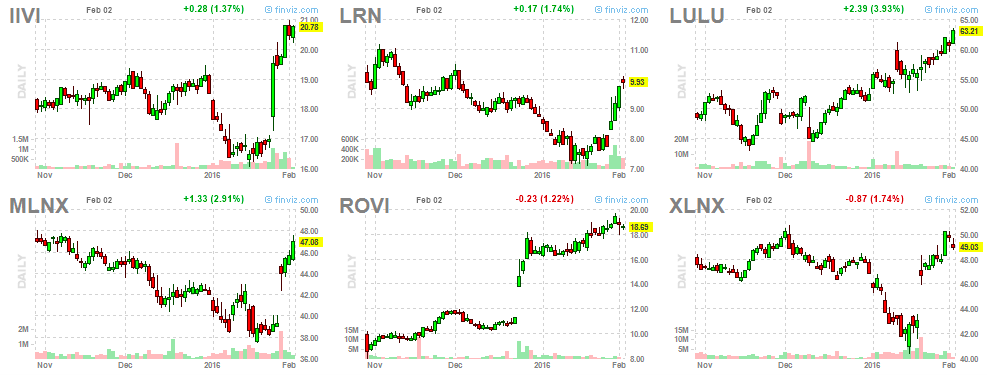2016 started with a major selloff during which most equities were highly positively correlated. In other words, most stocks moved together in the same direction – up and down, regardless of individual merits. This is a typical price behavior in times of panic and the ensuing bounces from oversold breadth levels. It is also one of the main reasons many people focus on trading high-beta ETFs in times of unusually high volatility.
As volatility subsided in the past couple weeks, correlations dropped and stock picking started to matter again. Stocks that beat earnings estimates and initially received favorable market reaction started to outperform. Academicians have named this process P.E.A.D. or Post Earnings Announcement Drift – stocks that gap up on a better than expected earnings report, tend to drift higher for several days to several weeks; stocks that gap down, tend to drift lower.
This is not just a temporary phenomena. It could be observed and traded successfully almost every earnings season by traders with various time frames – intraday, swing and position trading.
Here are some examples from the past couple of weeks.
Positive Market Reactions:
Negative Market Reactions:
Why do stocks continue to drift in the direction of the initial market reaction?
There are two plausible reasons:
- People tend to under-react to new information, then they panic (either because of fear of missing out or fear of losing) and over-react.
- Institutions need more time to build a new position or to distribute an existing one.


